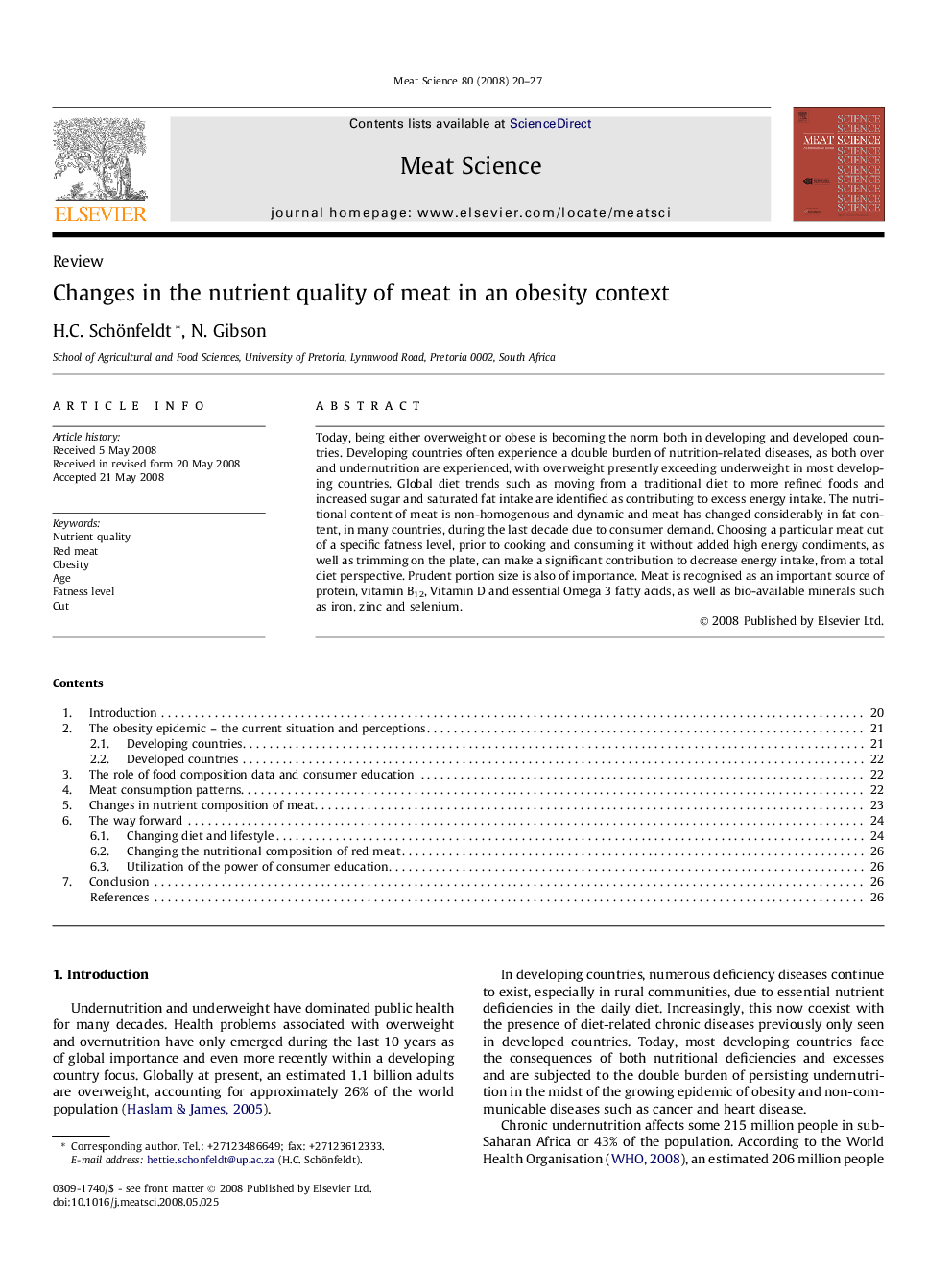| Article ID | Journal | Published Year | Pages | File Type |
|---|---|---|---|---|
| 2451642 | Meat Science | 2008 | 8 Pages |
Today, being either overweight or obese is becoming the norm both in developing and developed countries. Developing countries often experience a double burden of nutrition-related diseases, as both over and undernutrition are experienced, with overweight presently exceeding underweight in most developing countries. Global diet trends such as moving from a traditional diet to more refined foods and increased sugar and saturated fat intake are identified as contributing to excess energy intake. The nutritional content of meat is non-homogenous and dynamic and meat has changed considerably in fat content, in many countries, during the last decade due to consumer demand. Choosing a particular meat cut of a specific fatness level, prior to cooking and consuming it without added high energy condiments, as well as trimming on the plate, can make a significant contribution to decrease energy intake, from a total diet perspective. Prudent portion size is also of importance. Meat is recognised as an important source of protein, vitamin B12, Vitamin D and essential Omega 3 fatty acids, as well as bio-available minerals such as iron, zinc and selenium.
